2013 年天津商业大学基础英语考研真题
I Vocabulary & Structure
Directions: In each question, decide which of the four choices given will most
suitably complete the sentence if inserted at the place marked
1.The usher bowed deeply and_______ a long, almost musical sigh, when I showed him
the invitation which the mayor had sent me.
a. heaved b. grinned c. popped d. lurched
2. Some people want to _______ the monument, while others want to preserve it so
that the young generation could not forget the tragic history.
a. demolish b. annihilate c. wreck d. ruin
3. The middle school student has a ______ for collecting Japanese cartoon pictures,
which takes him plenty of time.
a. frenzy b. delirium c. hysteria d. mania
4. The current production methods will soon be rendered _______since new and better
ways are said to be invented.
a. ancient b. antique c. obsolete d. archaic
5. Modern enterprises are facing fierce competition so they are eager to have a
team of pioneering humanity and ______.
a. aggressiveness b. aggression c. invasion d. belligerence
6. Her bracelet is one of the several valuable gifts _____ on her when she visited
the royal family.
a. granted b. bestowed c. awarded d. confirmed
7. Small children are often___________ to nightmares after hearing ghost stories
in the dark.
a. definitive b. perceptible c. incipient d. susceptible
8. Many astronomers think the universe is continuing to evolve from a _________
cloud of gas.
a. polyphony b. primal c. primordial d. primogeniture
9. Sheep, cattle and antelope are __________; unlike dogs and cats, they show no
interest in meat.
a. voracious b. omnivorous c. carnivorous d. herbivorous
10. Vincent Van Gogh’s rise to __________ fame as one of the world’s great artists
came despite the fact that he scarcely sold a single painting during his lifetime.
a. posthumous b. postmodern c. postmortem d. posterior
11. The boys did not take the apples with any _______ intent, they were just hungry
and did not know any better.
a. malnourished b. malefactor c. malign d. malicious
12. The whole family was _________ by nature, and there were bitter legal battles
over the will.
a.acquisitive b. inquisitive c. requisition d. perquisite
�
13. Gone was the fierce_______ of the days when Bryan had swept the political arena
like
a prairie fire.
a. fervor b. emotion c. intelligence d. strength
14.The trees along the main street were________ with rags and plastic bags after
the
terrible hurricane.
a. destroyed b. chained c. festooned d. covered
15.The earth is actually vulnerable, but so far we seem _________ of the fragility
of the
earth’s natural systems.
a. aware b. oblivious c. conscious d. suspicious
16.Essentially, a theory is an abstract, symbolic representation of _________
reality.
A. that is conceived b. that is being conceived of
c. what it is conceived d. what is conceived to be
17.After the funeral, the residents of the apartment building _________.
a. sent faithfully flowers all weeks to the cemetery
b. sent to the cemetery each week flowers faithfully
c. sent flowers faithfully to the cemetery each week
d. sent each week faithfully to the cemetery flowers
18.4. Not until Kentucky’s Mammoth Cave had been completely explored in 1972
_______.
a. when was its full extent realized
b. that its full extent realized
c. was its full extent realized
d. the realization of its full extent
19.I know he failed his last test, but really he’s _________ stupid.
a. something butb. anything but
c. nothing but d. not but
20.His remarks were ________ annoy everybody at the meeting.
a. so as to b. such as toc. such to d. as much as to
II Proof Reading and Error Correction
Directions: In this passage there are altogether 5 mistakes in the five numbered
and underlined sentences. Try to detect the mistakes and write out your corrected
answers on the answer sheet.
提示:没有拼写和标点符号错误
Sample test: He avoided to help the poor. →avoided helping the poor A buzz ran
through the crowd as I took my place in the packed court on that sweltering July
day in 1925.
1) The counsel for my defense was the famous criminal lawyer Clarence Darrow.
Leading counsel for the prosecution was William Jennings Bryan, the silver-tongued
orator, three time’s Democratic nominee for President of the United States, and
leader of the fundamentalist movement that had brought about my trial.
�
A few weeks before I had been an unknown school-teacher in Dayton, a little town
in the
mountains of Tennessee. 2) Now I was involved in a trial reported the world over.
Seating in court, ready to testify on my behalf, were a dozen distinguished
professors and scientists, led by Professor Kirtley Mather of Harvard University.
More than 100 reporters were on hand,
and even radio announcers, who for the first time in history were to broadcast a
jury trial. "Don't
worry, son, we'll show them a few tricks," Darrow had whispered throwing a reassuring
arm
round my shoulder as we were waiting for the court to open.
The case had erupted round my head not long after I arrived in Dayton as science
master and
football coach at the secondary school. For a number of years a clash had been
building up
between the fundamentalists and the modernists.
3) The fundamentalists adhered to a literal interpretation of the Old Testament.
The modernists, on the one hand, accepted the theory advanced by Charles Darwin --
that all animal life, including monkeys and men, had evolved from a common ancestor
Fundamentalism was strong in Tennessee, and the state legislature had recently
passed a law
prohibiting the teaching of "any theory that denies the story of creation as taught
in the Bible."
The new law was aimed squarely at Darwin's theory of evolution. An engineer, George
Rappelyea, used to argue with the local people against the law.
4) During one such argument, Rappelyea said that nobody could teach biology without
teaching revolution. Since I had been teaching biology, I was sent for.
5) When I was indicted on May 7, no one, least of all I, anticipated that my case
would snowball one of the most famous trials in U. S. history
The American Civil Liberties
Union announced that it would take my case to the U. S Supreme Court if necessary
to establish
that a teacher may tell the truth without being sent to jail." Then Bryan volunteered
to assist the
state in prosecuting me. Immediately the renowned lawyer Clarence Darrow offered
his services
to defend me. Ironically, I had not known Darrow before my trial but I had met Bryan
when he
had given a talk at my university. I admired him, although I did not agree with his
views.
III Paraphrasing
Directions: Read the passage carefully and then paraphrase the five numbered and
underlined sentences.
�
Conversation is the most sociable of all human activities. And it is an activity
only of
humans. However intricate the ways in which animals communicate with each other,
they do not
indulge in anything that deserves the name of conversation.
1) The charm of conversation is that it does not really start from anywhere, and
no one has any idea where it will go as it meanders or leaps and sparkles or just
glows. The enemy of good conversation is the person who has "something to say."
Conversation is not for making a point. Argument may often be a part of it, but the
purpose of the argument is not to convince. There is no winning in conversation.
In fact, the best conversationalists are those who are prepared to lose. Suddenly
they see the moment for one of their best anecdotes, but in a flash the conversation
has moved on and the opportunity is lost. They are ready to let it go. Perhaps it
is because of my up-bringing in English pubs that I think bar conversation has a
charm of its own. Bar friends are not deeply involved in each other's lives. They
are companions, not intimates.
2) The fact that their marriages may be on the rocks or that their love affairs have
been broken or even that they got out of bed on the wrong side is simply not a concern.
They are like the musketeers of Dumas who, although they lived side by side with
each other, did not delve into each other's lives or the recesses of their thoughts
and feelings.
It was on such an occasion the other evening, as the conversation moved desultorily
here and
there, from the most commonplace to thoughts of Jupiter, without any focus and with
no need for
one, that suddenly the alchemy of conversation took place, and all at once there
was a focus. I do
not remember what made one of our companions say it--she clearly had not come into
the bar to
say it, it was not something that was pressing on her mind--but her remark fell quite
naturally into
the talk.
3) "Someone told me the other day that the phrase, 'the King's English, ' was a term
of criticism, that it means language which one should not properly use.'
The glow of the conversation burst into flames. There were affirmations and protests
and
denials, and of course the promise, made in all such conversation, that we would
look it up on the
morning. That would settle it; but conversation does not need to be settled; it could
still go
ignorantly on.
4) It was an Australian who had given her such a definition of "the King's English,"
which produced some rather tart remarks about what one could expect from the
�
descendants of convicts. We had traveled in five minutes to Australia . Of course,
there would be
resistance to the King's English in such a society. There is always resistance in
the lower classes
to any attempt by an upper class to lay down rules for "English as it should be
spoken."
Look at the language barrier between, the Saxon churls and their Norman conquerors.
The
conversation had swung from Australian convicts of the 19th century to the English
peasants of
the 12th century. Who was right, who was wrong, did not matter. The conversation
was on wings.
Someone took one of the best-known of examples, which is still always worth the
reconsidering. When we talk of meat on our tables we use French words; when we speak
of the
animals from which the meat comes we use Anglo- Saxon words. It is a pig in its sty;'
it is pork
(porc) on the table. They are cattle in the fields, but we sit down to beef (boeuf).
Chickens
become poultry (poulet), and a calf becomes veal (veau). 5) Even if our menus were
not written in French out of snobbery, the English we used in them would still be
Norman English. What all this tells us is of a deep class rift in the culture of
England after the Norman conquest.
The Saxon peasants who tilled the land and reared the animals could not afford the
meat,
which went to Norman tables. The peasants were allowed to eat the rabbits that
scampered over
their fields and, since that meat was cheap, the Norman lords of course turned up
their noses at it.
So rabbit is still rabbit on our tables, and not changed into some rendering of lapin.
IV Blank filling
Directions: Fill in each numbered blank in the following passage with one suitable
word to complete the passage.
My reader may, understandably, be on the verge of crying, “Communist!” A large,
diverse society cannot survive without property; a large, diverse, and modern
society cannot flourish without some form of intellectual property. But it takes
little reflection to grasp that there
is ample value that the term “property” doesn't capture. And works of art exist
simultaneously in
two ----------1------, a market economy and a gift economy.
The cardinal -------2-------between gift and commodity exchange is that a gift
establishes a feeling-bond between two people, whereas the sale of a commodity leaves
no
�
necessary connection. I go into a hardware store, pay the man for a hacksaw blade,
and walk out.
I may never see him again. The disconnectedness is, in fact, a virtue of the commodity
mode. We
don't want to be bothered, and if the clerk always wants to chat about the family,
I'll shop
elsewhere. I just want a hacksaw blade. But a -----3---------mode makes a connection.
There are
many examples, the candy or cigarette offered to a stranger who shares a seat on
the plane, the
few words that indicate goodwill between passengers on the late-night bus. These
tokens establish
the simplest bonds of social life, but the model they offer may be extended to the
most
complicated of unions—marriage, parenthood, mentorship. If a value is placed on
these (often
essentially unequal) exchanges, they degenerate into something else.
Yet one of the more difficult things to comprehend is that the gift economies—
like
those that sustain open-source software—coexist so naturally with the market. It
is precisely this
doubleness in art practices that we must identify, ratify, and enshrine in our lives
as participants in
culture, either as “producers” or “--------4---------.” Art that matters to us
—which moves the
heart, or revives the soul, or delights the senses, or offers courage for living,
however we choose
to describe the experience—is received as a gift is received. Even if we've paid
a fee at the door
of the museum or concert hall, when we are touched by a work of art something comes
to us that
has nothing to do with the price. The daily commerce of our lives proceeds at its
own constant
level, but a gift conveys an uncommodifiable surplus of inspiration.
The way we treat a thing can change its nature, though. Religions often prohibit
the sale
of sacred objects, the implication being that their sanctity is lost if they are
bought
and------5--------. We consider it unacceptable to sell sex, babies, body organs,
legal rights, and
votes. The idea that something should never be commodified is generally known as
inalienability
or unalienability—a concept most famously expressed by Thomas Jefferson in the
phrase
�
“endowed by their Creator with certain unalienable Rights . . .” A work of art
seems to be a
hardier breed; it can be sold in the market and still emerge a work of art. But if
it is true that in the
essential commerce of art a gift is carried by the work from the artist to his audience,
if I am right
to say that------6--------- there is no gift there is no art, then it may be possible
to destroy a work
of art by converting it into a pure commodity. I don't maintain that art can't be
bought and sold,
but that the gift portion of the work places a constraint upon our merchandising.
This is the
reason-------7-------even a really beautiful, ingenious, powerful ad (of which
there are a lot) can
never be any kind of real art: an ad has no status as gift; i.e., it's never really
for the person it's
directed at.
The power of a gift economy remains difficult for the empiricists of our market
culture
to understand. In our times, the rhetoric of the market presumes that everything
should be and can
be appropriately bought, sold, and owned—a tide of alienation lapping daily at the
dwindling
redoubt of the unalienable. In free-market theory, an intervention to halt
propertization is
considered “paternalistic,” because it inhibits the free action of the citizen,
now reposited as a
“potential entrepreneur.”Of course, in the real world, we know that child-rearing,
family life,
education, socialization, sexuality, political life, and many other basic
-------8------ activities
require insulation from market forces. In fact, paying for many of these things can
ruin them. We
may be willing to peek at Who Wants to Marry a Multimillionaire or an eBay auction
of the ova
of fashion models, but only to reassure ourselves that some things are still
--------9------- our
standards of dignity.
What's remarkable about gift economies is that they can flourish in the most unlikely
places
—in run-down neighborhoods, on the Internet, in scientific communities, and among
members of
Alcoholics Anonymous. A classic example is commercial blood
systems,-------10------- generally
�
produce blood supplies of lower safety, purity, and potency than volunteer systems.
A gift
economy may be superior when it comes to maintaining a group's commitment to certain
extra-market values.
V. Reading Comprehension
Directions: Read the following two passages carefully and choose the best answer
to each question among the four choices. Passage One
Since the early 1970’s, historians have begun to devote serious attention to the
working class
in the United States. Yet while we now have studies of working-class communities
and culture,
we know remarkably little of worklessness. When historians have paid any attention
at all to
unemployment, they have focused on the Great Depression of the 1930’s. The narrowness
of this
perspective ignores the pervasive recessions and joblessness of the previous decades,
as
Alexander Keyssar shows in his recent book. Examining the period 1870-1920, Keyssar
concentrates on Massachusetts, where the historical materials are particularly rich,
and the
findings applicable to other industrial areas.
The unemployment rates that Keyssar calculates appear to be relatively modest, at
least by
Great Depression standards: during the worst years, in the 1870’s and 1890’s,
unemployment
was around 15 percent. Yet Keyssar rightly understands that a better way to measure
the impact of
unemployment is to calculate unemployment frequencies—measuring the percentage of
workers
who experience any unemployment in the course of a year. Given this perspective,
joblessness
looms much larger.
Keyssar also scrutinizes unemployment patterns according to skill level, ethnicity,
race, age,
class, and gender. He finds that rates of joblessness differed primarily according
to class: those in
middle-class and white-collar occupations were far less likely to be unemployed.
Yet the impact
of unemployment on a specific class was not always the same. Even when dependent
on the same
trade, adjoining communities could have dramatically different unemployment rates.
Keyssar uses
these differential rates to help explain a phenomenon that has puzzled historians
—the startlingly
�
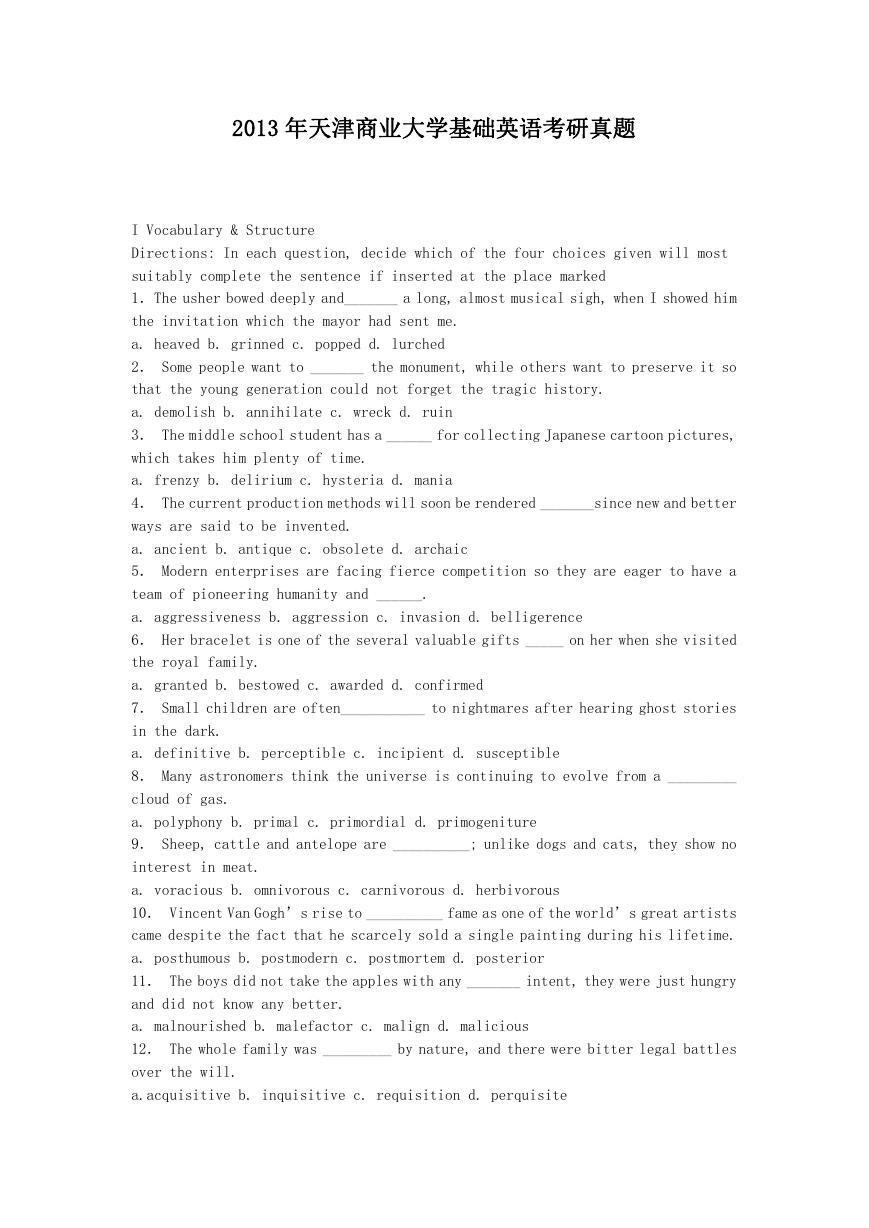
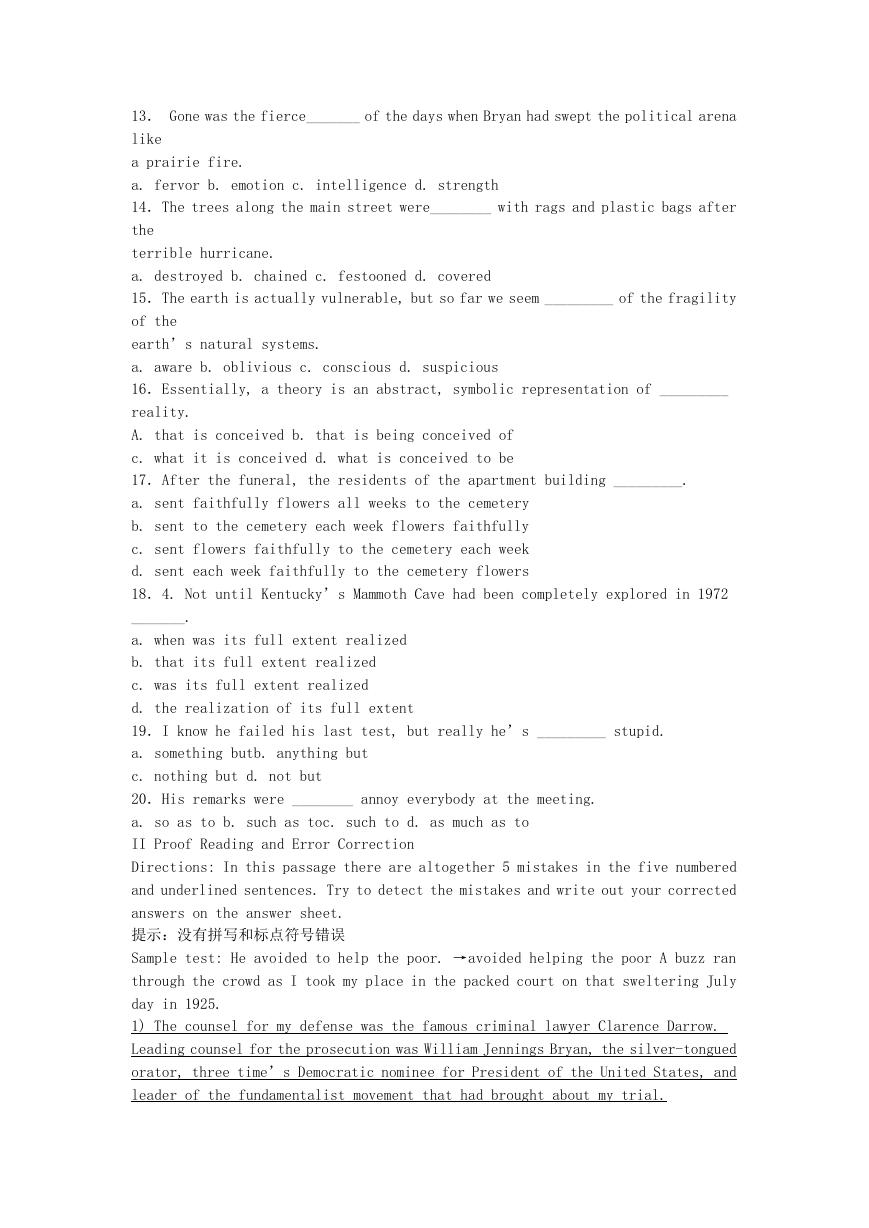
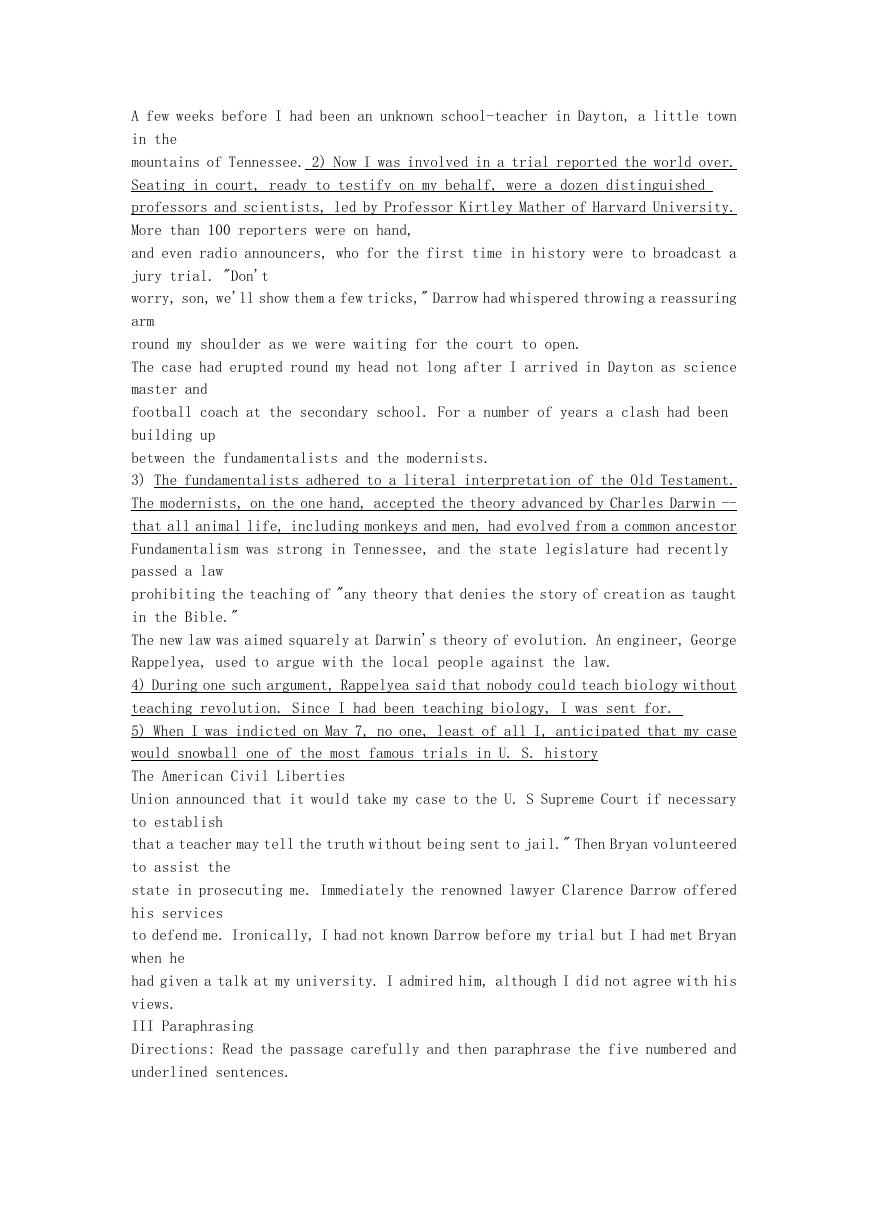
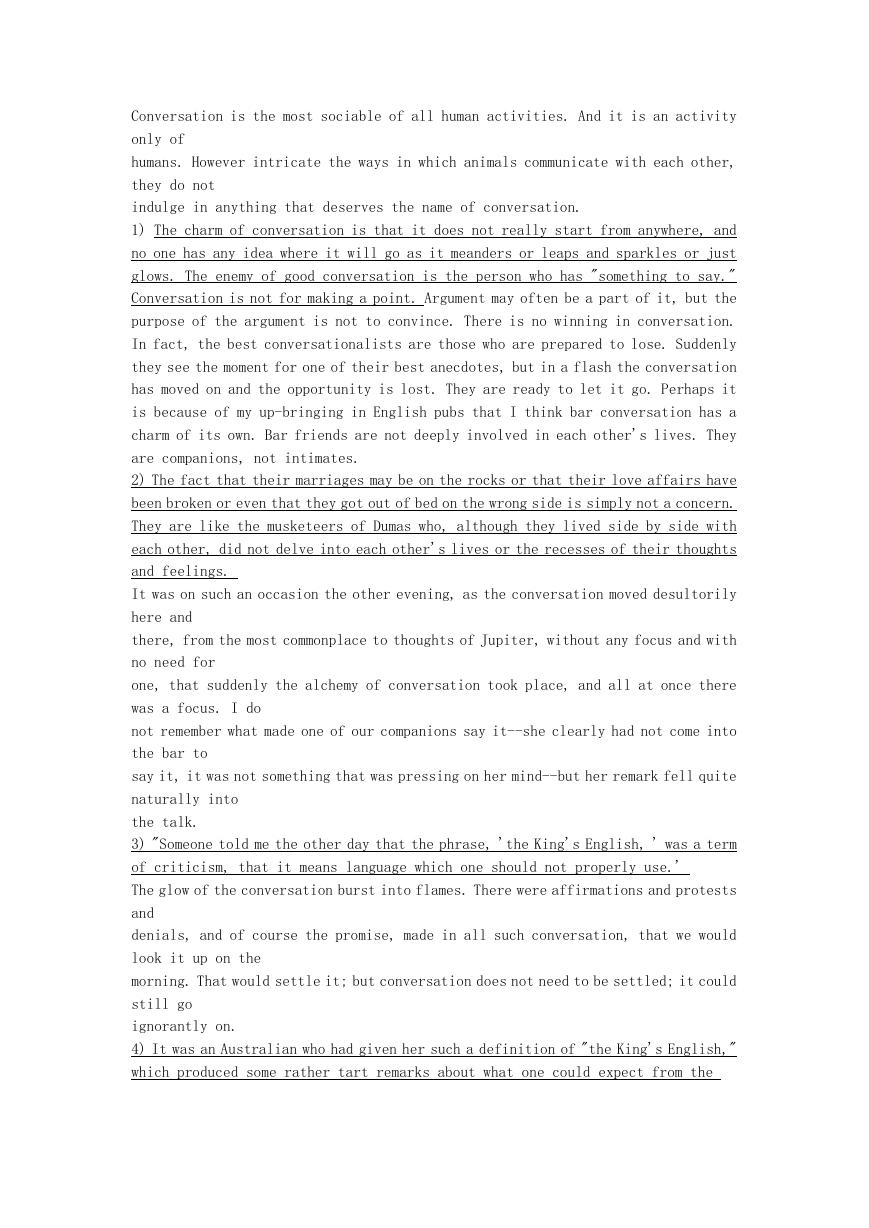
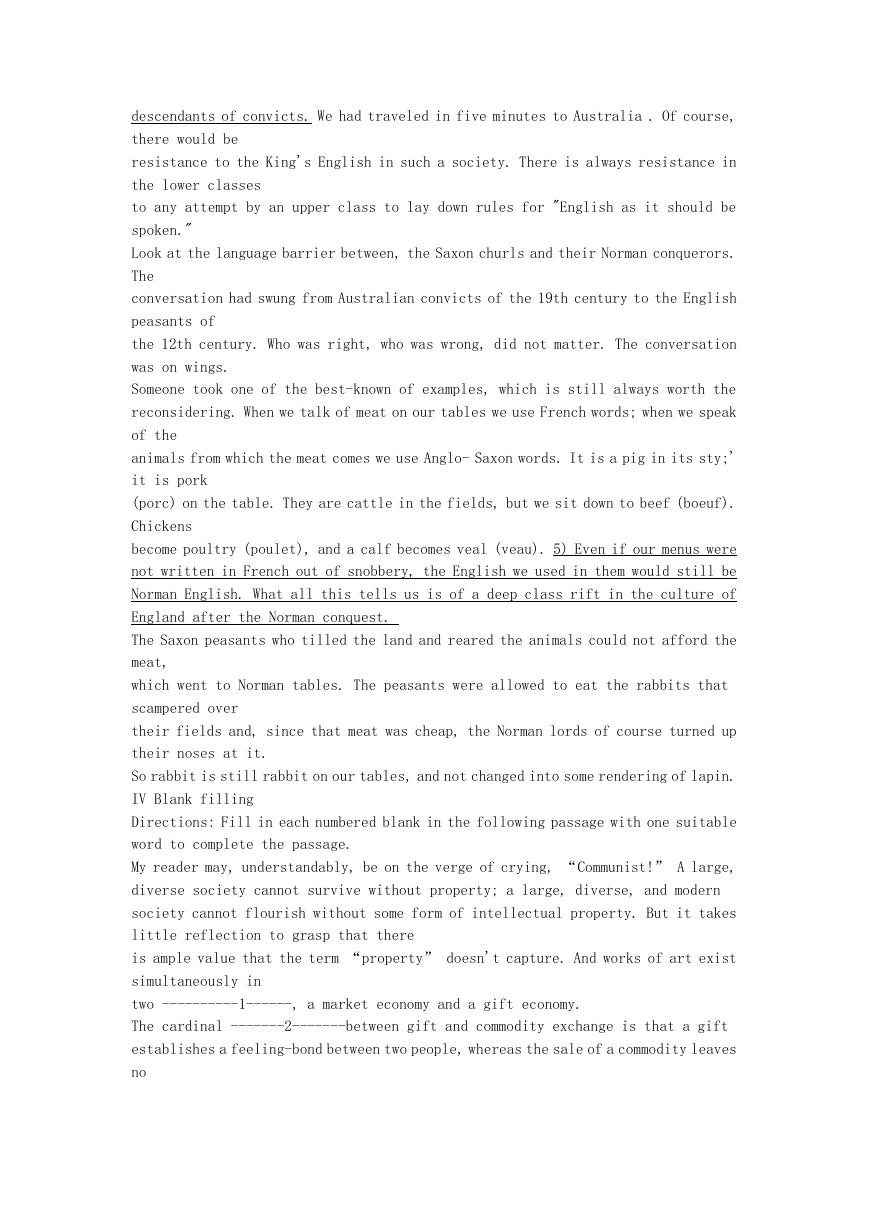
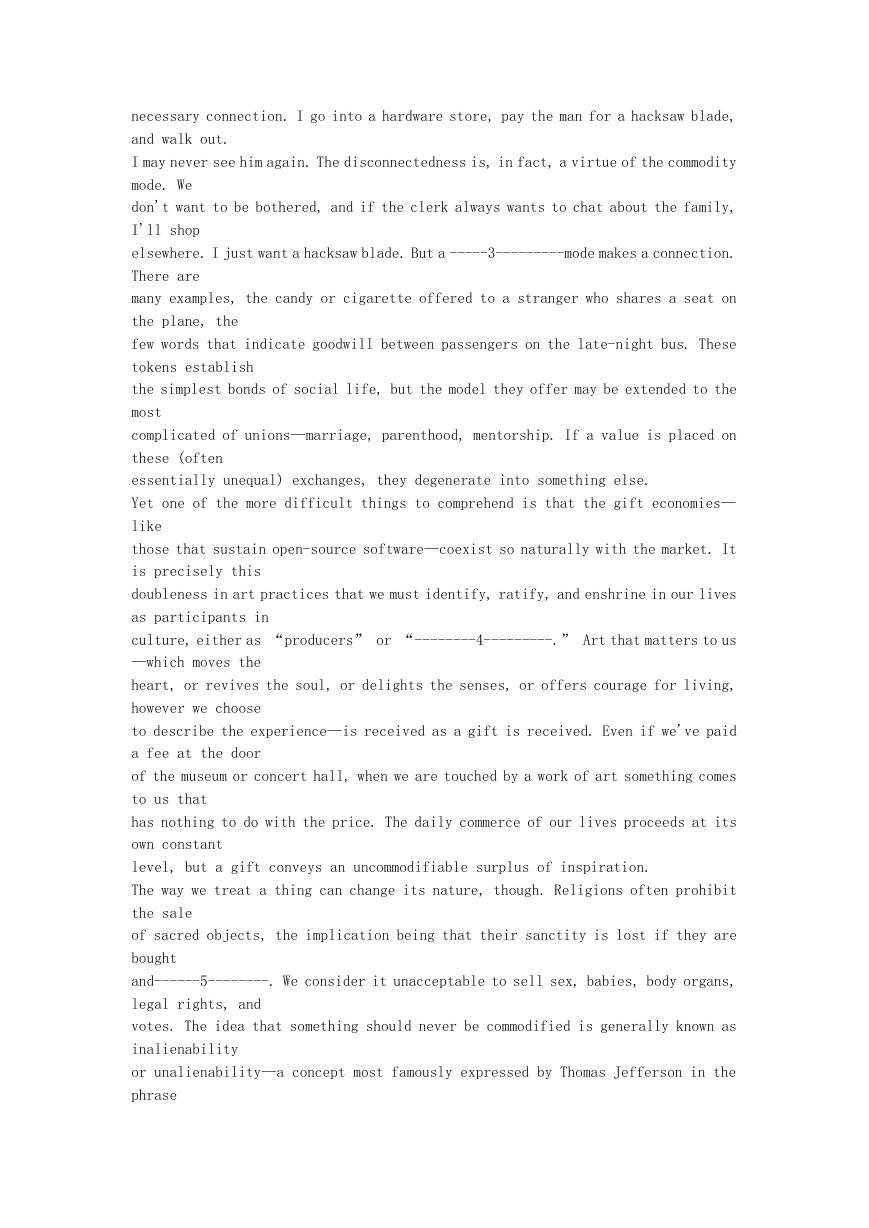
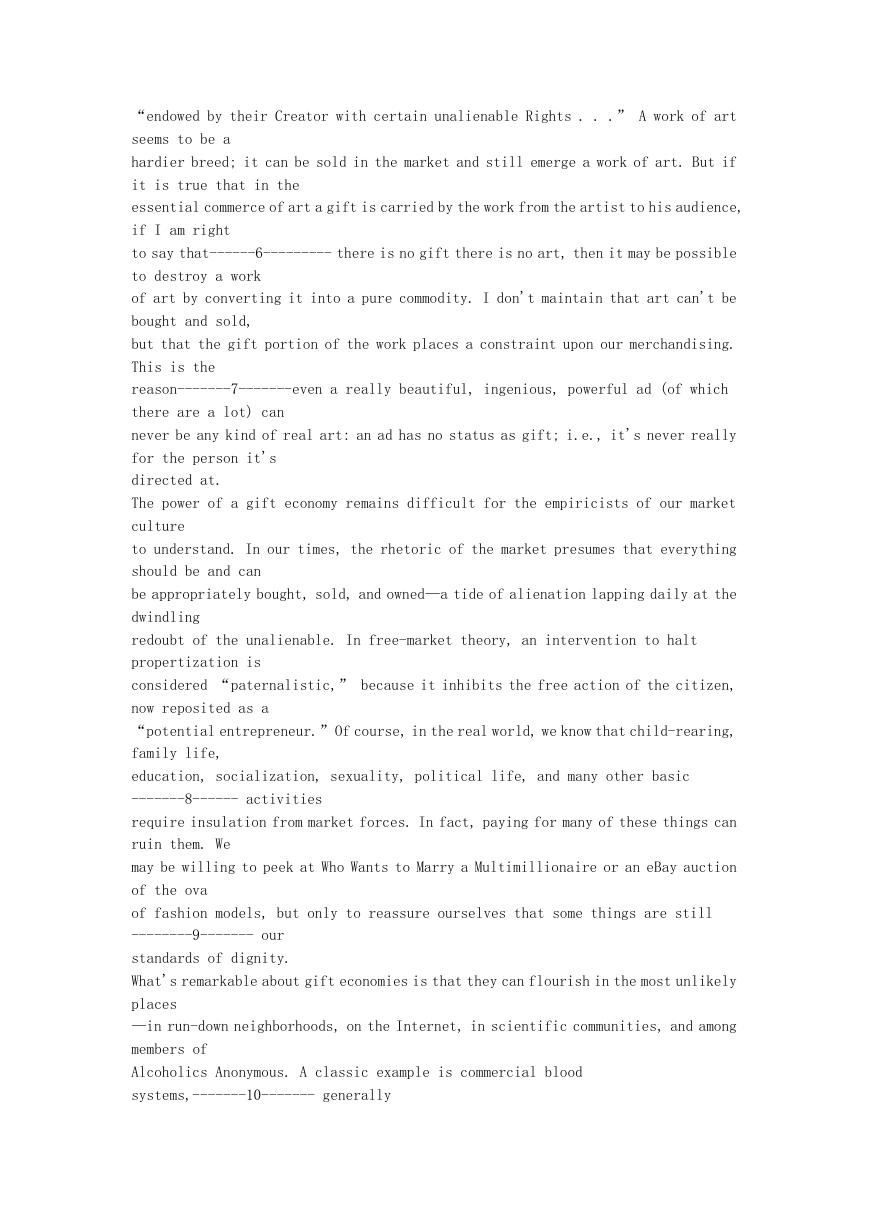
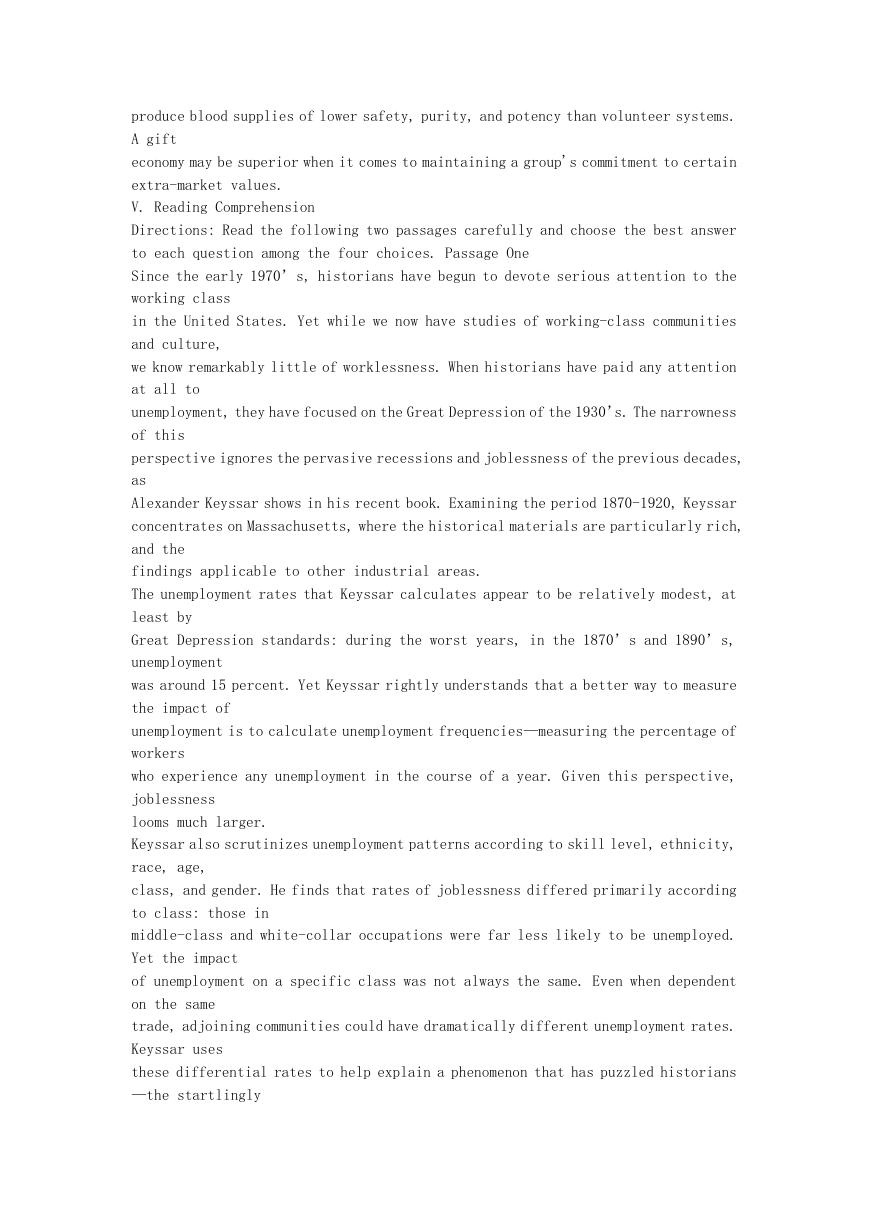








 2023年江西萍乡中考道德与法治真题及答案.doc
2023年江西萍乡中考道德与法治真题及答案.doc 2012年重庆南川中考生物真题及答案.doc
2012年重庆南川中考生物真题及答案.doc 2013年江西师范大学地理学综合及文艺理论基础考研真题.doc
2013年江西师范大学地理学综合及文艺理论基础考研真题.doc 2020年四川甘孜小升初语文真题及答案I卷.doc
2020年四川甘孜小升初语文真题及答案I卷.doc 2020年注册岩土工程师专业基础考试真题及答案.doc
2020年注册岩土工程师专业基础考试真题及答案.doc 2023-2024学年福建省厦门市九年级上学期数学月考试题及答案.doc
2023-2024学年福建省厦门市九年级上学期数学月考试题及答案.doc 2021-2022学年辽宁省沈阳市大东区九年级上学期语文期末试题及答案.doc
2021-2022学年辽宁省沈阳市大东区九年级上学期语文期末试题及答案.doc 2022-2023学年北京东城区初三第一学期物理期末试卷及答案.doc
2022-2023学年北京东城区初三第一学期物理期末试卷及答案.doc 2018上半年江西教师资格初中地理学科知识与教学能力真题及答案.doc
2018上半年江西教师资格初中地理学科知识与教学能力真题及答案.doc 2012年河北国家公务员申论考试真题及答案-省级.doc
2012年河北国家公务员申论考试真题及答案-省级.doc 2020-2021学年江苏省扬州市江都区邵樊片九年级上学期数学第一次质量检测试题及答案.doc
2020-2021学年江苏省扬州市江都区邵樊片九年级上学期数学第一次质量检测试题及答案.doc 2022下半年黑龙江教师资格证中学综合素质真题及答案.doc
2022下半年黑龙江教师资格证中学综合素质真题及答案.doc